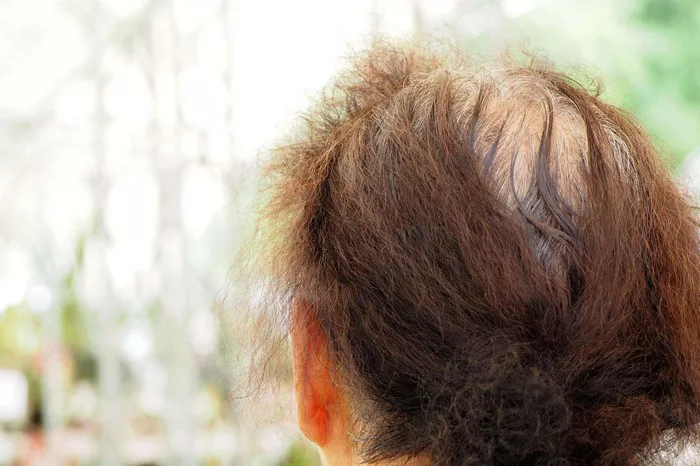Hair is not just a defining element of one’s appearance; it can also be a reflection of one’s health. However, the confusion between normal hair shedding and hair loss often leads to unnecessary concerns. In this informative guide, we will delve into the world of hair shedding and hair loss, exploring the differences, causes, and remedies to help you maintain a healthy head of hair.
Hair Shedding: A Natural Phenomenon
Hair shedding is an entirely normal part of the hair growth cycle. Understanding this process is essential to differentiate it from hair loss. Here are some key points about hair shedding:
1. The Hair Growth Cycle:
Hair goes through a cycle of growth, rest, and shedding. Each hair strand operates independently, so it’s common for some hairs to be in the shedding phase while others continue to grow.
2. Daily Shedding:
On average, individuals shed between 50 to 100 hairs daily. This is considered normal and should not cause alarm.
3. Seasonal Variations:
Hair shedding can increase slightly during certain seasons, particularly in the fall. This is a natural response to environmental changes.
4. Causes of Shedding:
Factors such as stress, hormonal fluctuations (e.g., pregnancy, childbirth, or menopause), illness, and dietary changes can influence hair shedding.
Hair Loss: When It’s More Than Shedding
Hair loss, on the other hand, is a condition where hair sheds at an accelerated rate, and the hair follicles do not regrow hair to replace what has been lost. Here are key distinctions between hair shedding and hair loss:
1. Noticeable Thinning:
With hair loss, you may notice a visible reduction in hair density, often in specific areas. Thinning is more apparent than in the case of regular shedding.
2. Excessive Shedding:
Hair loss goes beyond the typical daily hair shedding of 50-100 hairs. If you’re losing significantly more hair, it may be a sign of a problem.
3. Persistent Hair Loss:
While hair shedding can be temporary and linked to a specific cause, hair loss tends to be more persistent and may not resolve on its own.
4. Underlying Causes:
Hair loss can be caused by a variety of factors, including genetics, medical conditions (e.g., alopecia areata, thyroid disorders), medications, and extreme stress.
Diagnosing the Issue
To determine whether you are experiencing hair shedding or hair loss, it’s crucial to consult with a healthcare professional or dermatologist. They can perform a thorough evaluation, which may include:
1. Scalp Examination:
A visual examination of your scalp to assess the health of your hair follicles.
2. Medical History:
Discussing your medical history, family history of hair loss, and any recent life changes or stressors.
3. Blood Tests:
If necessary, blood tests can be conducted to check for underlying medical conditions that may contribute to hair loss.
4. Pull Test:
In some cases, a pull test may be performed to assess the amount of hair shedding. A higher-than-normal count may indicate a problem.
Treating Hair Shedding and Hair Loss
Treatment options for hair shedding and hair loss differ based on the underlying cause. Here’s a general overview:
1. For Hair Shedding:
a. Stress Management: Reducing stress through relaxation techniques and lifestyle changes can help minimize hair shedding.
b. Balanced Diet: Ensuring you have a well-balanced diet rich in essential nutrients can promote healthy hair growth.
c. Gentle Hair Care: Avoiding harsh hair treatments and excessive styling can prevent further damage.
2. For Hair Loss:
a. Medications: Depending on the cause, your healthcare provider may prescribe medications such as minoxidil or finasteride to stimulate hair regrowth.
b. Topical Treatments: Some topical treatments, like topical corticosteroids or hair growth serums, may be recommended.
c. Hair Transplant: In advanced cases of hair loss, hair transplant surgery may be an option.
Maintaining Hair Health
Regardless of whether you’re dealing with hair shedding or hair loss, there are general tips to maintain healthy hair:
1. Gentle Hair Care:
Be gentle when washing, brushing, and styling your hair to minimize damage.
2. Balanced Diet:
Consume a diet rich in vitamins and minerals that promote hair health, including biotin, zinc, and vitamins A and E.
3. Avoid Tight Hairstyles:
Tight hairstyles like ponytails and braids can cause stress on hair follicles. Opt for looser styles when possible.
4. Regular Scalp Massage:
Massaging your scalp can improve blood circulation to the hair follicles, promoting healthy hair growth.
See Also: [Revealed!] How Much is Too Much Hair Loss When Washing Hair?
In conclusion
Understanding the differences between hair shedding and hair loss is vital for maintaining hair health. While shedding is a natural part of the hair growth cycle, hair loss can be a more complex issue with various underlying causes. If you have concerns about your hair, seeking professional advice is the first step toward finding an appropriate solution and restoring your confidence in your hair’s health and appearance.


